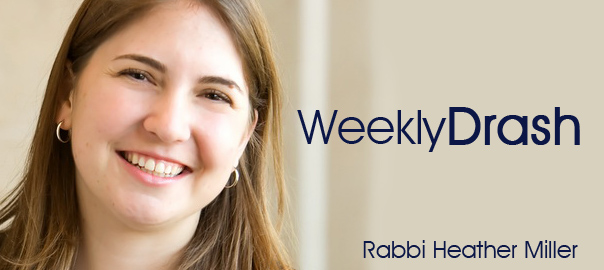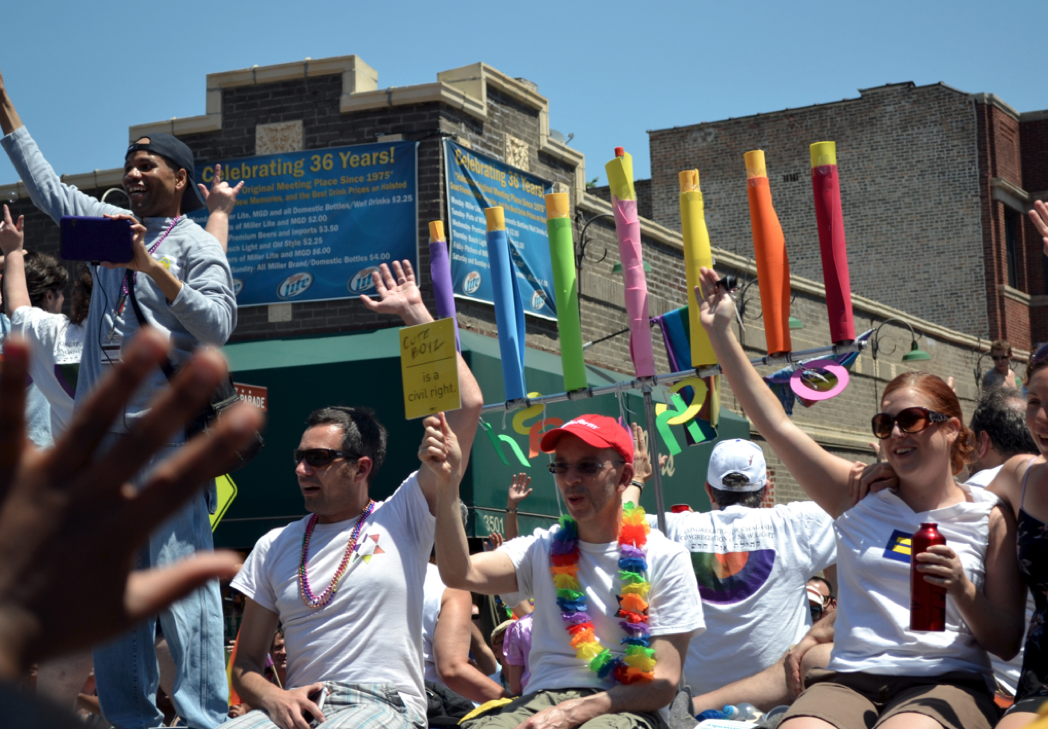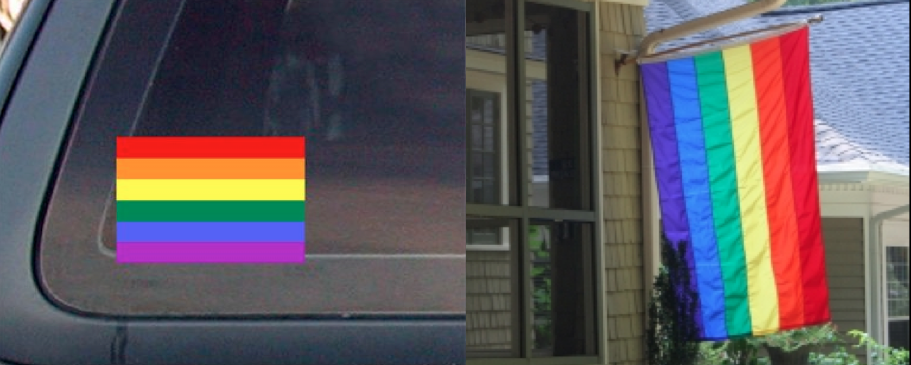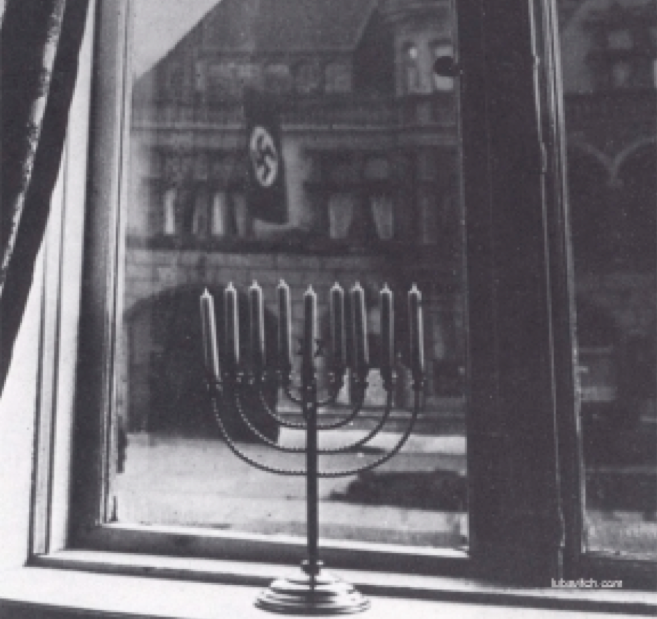Hanukkah Sermon / November 29, 2013

By Rabbi Heather Miller
Ever watch a really good sports game…
…where the outcome is decided upon by the referee?
I’m always mesmerized by news reports of those games. Inevitably, the newscaster goes to representatives from each side to interview them about the play.
The fan whose team benefitted from the call unfailingly praises the referee saying that it was the “right call.” The fan whose team lost because of the call unfailingly curses the referee questioning his eyesight. Alternatively, it might look like this:

Eyesight has nothing to do with it my friends. Or maybe it does.
You see, in life, the same event can be seen from multiple perspectives.
It just depends on who is doing the seeing, how it relates to their experience –how they make meaning out of the events.
We know ALL about multiple perspectives in Judaism. Rabbinic literature is full of different perspectives.
The Mishnah from the year 200 features famous opposing arguments from feuding rabbinic pairs like Hillel and Shammai, Shamaya and Avtalion and Yose ben Yohanan and Yose ben Yoezer.
And if a page of Talmud were colored in a way where each commentary was colored in a different color, do you know what it would look like? It would look like this:
Because our tradition is not fixated on dogma, the multi-vocality IS the tradition! Taking a deeper look, we can see many ways to view Hanukkah, too. Asking the age-old question: Ma’ei Hanukkah? What is Hanukkah? The Babylonian Talmud from the 5th century relates four answers.
1) it answers from a practical perspective: Hanukkah is the 25th day of the Hebrew month of Kislev that lasts 8 days.
2) it answers from a historical perspective: Hanukkah marks when the Hellenists entered the Temple and defiled the oil there, but the Maccabees prevailed and conquered them.
3) it answers from a spiritual perspective: Hanukkah marks when oil was sought to light the lamp in the Temple, only one vial to last just one day was found with the seal of the high priest intact, but a miracle occurred and it fed the holy lamp eight days in succession.
4) and it answers from an emotional perspective: Hanukkah was established as days of good cheer on which psalms of praise and acknowledgement of God’s wonders are to be recited.
In modern times, each of us is tasked with the challenge of making our own meaning of thi ancient holiday from our own perspective. We each decide how we will relate the importance of the holiday to those around us. Some today find connection to the military action recounted in the Hanukkah story.

They emphasize the story about a purist sect of Jews who triumph over the assimilation of their co-religionists through a murderous civil war.
But I’d like to share a different perspective. For me, the Hanukkah that I celebrate tonight resonates with the ideals of human dignity, freedom of expression, and bringing light into the world.
I see the holiday as a member of the global LGBT and ally community.
I wouldn’t say that Hanukkah is now a “Gay Holiday”– but I would say that it has particular resonances for us in the LGBT community.
As such, tonight I’ll share two symbols of Hanukkah that are particularly meaningful. First, the dreidel.
The dreidel is a four sided top that is said to have originated out of necessity. You see, during various periods of Jewish history, Jews would be punished or killed for teaching the tradition. The dreidel game was initially created so that we could teach the Hanukkah story but if, as we were teaching it, menacing and antisemitic authorities approached, we could pass it off as simply teaching a gambling game played with a top. In this way we were careful only to reveal our Jewish identity in safe spaces.
Similarly we, in the LGBT community, have at times been forced to remain closeted amidst homophobic company, being careful only to reveal our identity in safe spaces. The dreidel game speaks to this human experience– there may be parts of each of us that we can not yet reveal for a variety of very sound reasons. The dreidel symbolizes those experiences and all experiences where we need to hide who we are.
Converse to the humble and closeted posture of the symbol of the dreidel is the bold and proud stance of the Hanukkiah.
The Hanukkiah is a 9 branched menorah (or candelabra) which serves to actively display Jewish identity. In fact, prior to the symbol of the star of David, the symbol of the menorah was the universal sign of Jewish identity– as seen on this ancient Hasmonean coin.

The rabbis insisted that Jews not simply light the Hanukkiah on each night of Hanukkah, but that we should pirsum hanes– that we should publicize the holiday. They ruled that it was a mitzvah– a commandment– to display the hanukkiah in our windows.
So that it could be seen, they were careful to specify that it should be displayed no lower than 18 inches nor no higher than 5 feet from the ground, and it must burn at least half an hour after the stars appear in the sky. Lighting the Hanukkiah pridefully displays our Jewish identity.
In a similar way we, as an LGBT and ally community might display our rainbow flag or bumper stickers on our cars or on our homes to freely display our LGBT and ally identity.
These activities reminds us as humans to celebrate who we are, where we come from and who we choose to be– even as and perhaps especially as minorities amidst a majority cultural world.
What a contrast to the shy and closeted idea of the dreidel– whereas the dreidel reminds us of oppression and fear, the hanukkiah, which is definitely not shy, rather proudly stands arms outstretched and on fire.
That’s what made this year’s Hanukkah in Santa Monica candle lighting particularly meaningful to me. On the first night of Hannukah Cantor Juval, the BCC choir and members of the BCC community publicly lit a giant 7 foot hanukkiah in the middle of the Third Street Promenade– a very public tourist destination.
What a privilege to be able to display our celebration of who we are proudly in the public square. Our celebration was not only a celebration of our Jewish identity, or of our LGBT or ally identity– it was a celebration of all identities and all people who come to share of who they are– to honor the diversity across the human experience. What a privilege. That is why lighting the hanukkiah is such a radical act– it brings light and joy and the freedom of expression and pride to areas that are dark or otherwise oppressed.
As we lit this giant hanukkiah, we joined a tradition of Jews over thousands of years. As we lit the giant hanukkiah, I was reminded of Spain’s public hanukkiah lighting in 1998, the first time this happened in over 500 years– since the persecution of Jews during the Spanish Inquisition.
As we lit the giant hanukkiah in Santa Monica, I was also reminded of the profound act of courage and pride and resistance that a Jewish family must have mustered to light a hanukkiah in the window of their family home in Germany opposite the Nazi flag in 1931.
You see, these cute, and often commodified symbols are so much more than kitsch that we find online and in stores at this season.
These symbols have deep and profound significance.
May these symbols be for you, and for each of us, too, an invitation to consider what parts of ourselves we mask as a dreidel masks its purpose, and what parts of ourselves we proudly display as a hanukkiah. May it cause us to ponder what it would be like to come out and be who we truly are in all of the ways that we were created. May it inspire us to express ourselves more readily. May it encourage us to celebrate who we are fully, publicly and challenge us to make safe spaces for all who might otherwise be stigmatized. May our collective efforts illuminate the world with the celebration of all kinds of diversity. Keyn Yehi Ratzon.
Happy Hanukkah.
One Comment on “Hanukkah Sermon / November 29, 2013”
-
bonnie chaban December 3, 2013 pm31 9:26 pm .
Your sermons are insightful as always, thanks.























